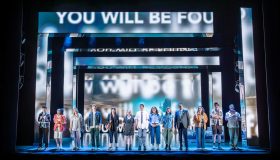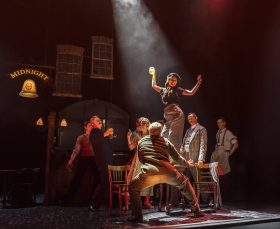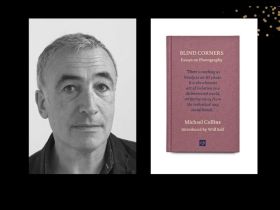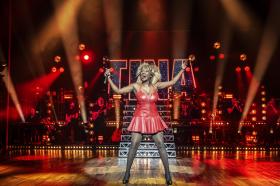Last year, Arts Hub UK carried the story of Steve Kurtz, a Buffalo University Professor of Art, who was arrested on suspicion of terrorist activity following his call to 911 upon the death of his wife. And for those who don’t yet know this story, it is shockingly simple. After calling 911 when his wife suffered a cardiac arrest, Kurtz has become public enemy number 1. Why? Well when the police arrived in response to the 911, they saw test tubes and petri dishes that Kurtz was using in a current artwork. So they called in the FBI. Kurtz used to be a new media artist. Now however his wife is dead and he is in jail.
This case has brought back significant memories for American artists, namely that the McCarthy era, seen now as one of the darkest periods in the American creative scene, is upon us again.
Well, despite what seemed to be an open-and-shut case of bureaucratic overreaction, Steve Kurtz is still facing charges under Section 175 of the US Biological Weapons Anti-Terrorism Act of 1989, as expanded by the USA PATRIOT Act.
This week, Arts Hub Global takes a look at the effects of the War on Terror, and the associated introduction of hard-line laws and infringements on human rights, on the art world. How has the paranoia and hysteria surrounding the rise of terrorism and the threat of biological and chemical warfare impinged upon our freedom of cultural and artistic expression?
Update on Steve Kurtz
A group known as Critical Art Ensemble (CAE) has formed a Defense Fund to support Steve Kurtz, and on Sunday April 17, 2005, an art auction to benefit the Fund raised $167,700. The auction, held at Paula Cooper Gallery in New York City, featured over fifty artists who donated their work to the cause.
It is worth visiting the Federal Bureau of Investigation website for details about this case. They are indeed the great inquisitors in the Kurtz investigation and their website is more than happy to provide useful links to Congressional speeches and papers regarding the Anti-terrorism and Patriot Acts.
For a non-government assessment, however, of the impact of the Patriot Act on citizens and cultural workers, the American Civil Liberties Union looks to explode the myth of artist as terrorist.
But it’s not just about bio-terrorism…
Arresting a grieving widower on suspicion of bio-terrorism solely on the evidence of a few discarded petri dishes and unwashed test tubes is one thing, but the situation is becoming even more dangerous for US artists engaged in any kind of cutting-edge or social commentary work.
In a political environment where even to question the policies of those in power is considered subversive, artists are being subjected to increasingly heavy-handed and frightening tactics by law enforcement agencies.
And the FBI isn’t the only culprit: the latest occurrence of intimidation and attempted censorship is now at the hands of the Secret Service.
Less than a week before the art auction to assist Steve Kurtz, the U.S. Secret Service sent agents to investigate an exhibit at Columbia College in Chicago, called Axis of Evil: The Secret History of Sin.
This exhibition features stamps designed by 47 artists addressing issues such as the Roman Catholic sex-abuse scandal, racism and the war in Iraq. The problem? Just one stamp. But not just any old stamp. This stamp depicts President George W. Bush with a gun pointed at his head.
For a summary of this frightening development, see the following stories:
The U.S. Secret Service raid reportedly followed an anonymous telephone call from a “concerned citizen” and, according to Secret Service spokesman Tom Mazur, was necessary to “… ensure, as best we can, that this is nothing more than artwork with a political statement”.
Hard to imagine what else it could be – perhaps a coded blueprint for the destruction of Western civilization?! (We shouldn’t joke, really, or we could end up the subject of a raid ourselves in the current climate!).
Indeed there has been a significant rise in such cases since the tragic events of September 11 2001, as evidenced by an 11-page document, produced by the Critical Art Ensemble, which lists similar cases since that date.
The rise of state censorship
The rise of state censorship and control of artistic expression in the West is an alarming development for artists and audiences alike. Citizens of the United States could be forgiven for thinking this was all behind them, that the years of the McCarthy black lists had sated the state’s thirst for the control of artists’ art and minds. Even observers outside the US, and those of us too young to recall the HUAC and Censorship Changes (HUA) itself know the stories of writers, actors and directors at the height of their careers who were destroyed forever by McMarthy’s rapacious pursuit of “reds” in Hollywood. The Fight For America lists the most celebrated of these cases, including that of celebrated playwright Arthur Miller, who died only this year. Miller was perhaps one of that era’s most courageous artists. And the Arthur Miller society chronicles the account of his resistance to, and critique of, the McCarthy era. As does the Blacklists site, which provides an invaluable and fascinating look inside The Crucible, Miller’s artistically brilliant and politically devastating condemnation of the HUA.
These latest developments in the US bring to mind some of the world’s more oppressive regimes, such as the USSR, where all artistic expression was subject to Communist Party approval.
Those days aren’t entirely behind Russian artists. Liberty under threat in Russia is another story of how fear can create imaginary monsters. In an incident that closely parallels the raid on the Axis of Evil exhibition, two museum workers and an artist recently went on trial in Moscow for inciting religious hatred. Their crime? Staging an exhibition of modern art that focused on Jesus Christ. For the increasingly powerful Russian Orthodox Church, this was no joking matter.
Other recent reports of censorship in post-Communist Russia include an assessment of KGB involvement in Russian arts.
Africa too is another hotbed of political interference, censorship and state control. The life of the artist, journalist and cultural worker in Nigeria or Zimbabwe is fraught with danger and requires a commitment to truth and artistic expression barely imagined in the West.
History of censorship and state control of art and artists
In fact state interference in art and cultural expression has been the scourge of artists in Western culture from the days of Aristotle.
History and Definitions of Censorship provides a broad overview of the history of state control and censorship of the arts throughout the ages.
“Censorship has been through many mutations over time. But the fact that it has been an issue even in pre-literate times attests to the importance it has had in cultures and civilizations throughout history. It is of critical importance to have a working history of the issue and a solid definition when first making forays into the many aspects of censorship. It will help create a backdrop and deeper understanding and perhaps even aid in the resolution of current conflicts.”
What is to be done?
For an overview of cultural policy responses to threats of censorship and state control of the artist’s voice, the Centre for Arts and Culture, part of George Mason University in Arlington, Virginia is quite comprehensive in its analysis. Whilst Censorship in the Arts offers a more polemical discussion.
“Public art has become a political football, unfortunately. Legislators and the public cannot agree on what art is, what kind of art should be funded and which art censored. The fact that art is censored at all horrifies many. And by the same token some of the art horrifies many, too. This seemingly unsolvable issue of “taste” will be with us for some time to come. Learn what inroads some have made to understand it.”
Similarly the essay The Coming Criminalization of Art, could be seen as taking an extreme position in the discussion.
The Future
Is this issue destined to become more fraught in this era of “War on Terror”, and the Internet age? Grappling with censorship of online and electronic art and cultural expression is an entirely new area for artists, bureaucrats and policy makers to deal with. Passionate defenders of the first amendment, they exclaim:
“The Electronic Frontier Foundation (EFF) was created to defend our rights to think, speak, and share our ideas, thoughts, and needs using new technologies, such as the Internet and the World Wide Web. EFF is the first to identify threats to our basic rights online and to advocate on behalf of free expression in the digital age.”




